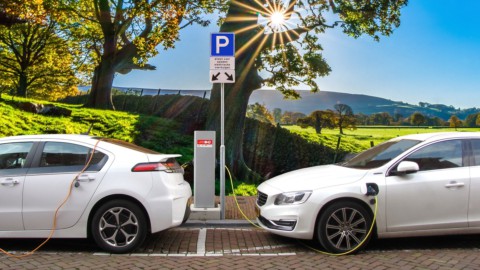Italy can boast many firsts, thanks to the scientific and entrepreneurial skills of a people second to none, which has led it, in its recent history, to become the fifth industrial power on the planet.
But this is history, not the present. Often, within a new continental ranking, the Belpaese appears in the last places, saved from the tail position thanks to Greece, a state to which we owe sympathy and gratitude for this.
Let's look for example at thelatest ranking on the development of electric car market, published in January by the company LeasePlan. Out of 22 European countries examined, Italy ranks seventeenth. Worse than us the usual Greece and the group of Eastern countries, with the exception of Hungary which instead does better than Switzerland and ranks 14th.
However, let us try to understand the criterion with which this ranking was drawn up because, if the real weaknesses are not understood, how could they be corrected?
The list is drawn up according to four parameters: market maturity (therefore percentage of sales of BEVs, FCEVs and PHEVs out of the total), development of the recharging infrastructure system, government incentives, diffusion of rental plans for electric cars.
For the first criterion, it is evident from the results of the sales statistics that the main limitation in Italy is given by the citizens themselves, who choose the electric car in a much lower percentage than the average European. This is an objective fact, but you need to understand why. Certainly weighs the predilection for segments A and B in which the offer of models was still not very convincing in recent times, especially for Italians who have a strong automotive culture.
To date, from a technological point of view, only a few automakers have advanced electrified products; all manufacturers are chasing after Tesla which, having started early and with large capital, has a strong technical and image advantage over the competition. But buying cars from the US brand was and still is a possibility reserved above all for the "wealthier" markets, such as Switzerland, Norway, Holland and Sweden, which are the countries currently at the top of the ranking analysed.
Fortunately, several electric cars from segments A and B will arrive from this year, including the iconic Fiat 500, which still falls within the preferences of Italian motorists. The wait for the next innovations that will be put on the market is therefore justified, among which the expansion of the Tesla range towards cheaper products stands out. There are therefore all the elements for Italy to move up the rankings.
The second point concerns the charging infrastructure system. Here the Italian peninsula does not disfigure at all and, although the network is still insufficient in terms of territorial density, in relation to the fleet of plug-in cars in circulation, the trend is positive. However, there is room for improvement. Starting from the location of the charging points, which are often decentralized and without ancillary services. Unfortunately, to overcome the atavistic incapacity of the Italian bureaucracy to provide adequate areas and authorizations within acceptable times, operators in the sector have installed refueling stations where possible and not where it was better.
However, the commitment of Enel X, A2A, Repower and BeCharge, to name a few, has allowed the achievement of good results and, where it has met the most efficient administrations, such as in Lombardy, Veneto and Trentino-Alto Adige, together with premises, has already achieved excellent results.
The third factor concerns government incentives, and here we return to a critical area, indeed decidedly critical. Politics has not been able to overcome the logic of the incentive given to the automotive sector "in rain", therefore without clarity on the objectives. In other words, incentives to displease no one, not a sustainability agenda. Furthermore, forms of economic concessions continue in favor of fossil fuels, such as natural gas, which even today continues to be the only fuel sold in bus stations without any excise duty, at a bargain price, despite the evident inability to substitute in the use the other more polluting fossil fuels, such as petrol and diesel, on a daily basis. Perhaps the time has come to say enough to this exclusively Italian anomaly.
However, one must object to the editors of the LeasePlan ranking, that the incentive policy is carried out not only on a national, but also on a regional scale. For example, Lombardy has allocated a fund of 18 million euros (of which 5 million for 2019 and 13 million for 2020) through the gang "Renew Cars", leading to significant growth in sales of full electric cars.
Finally, the fourth parameter concerns the ratio between the rental of full electric cars compared to the total number of electrified vehicles. This particular indicator sees the Belpaese in the back-up positions and is linked to deep-rooted habits. Italians still prefer their own car, little used and long-lived. In fact, the fleet of cars circulating in the peninsula is among the oldest in Europe. A habit change on this front would have the huge benefit of speeding up vehicle refurbishment.
Furthermore, using an electric mobility rental service offers many practical and economic advantages over owning it, while creating a younger, more reliable and, above all, more sustainable fleet of cars.
°°°°The author is part of the team that manages the Vaielettrico portal (www.vaielettrico.it)





